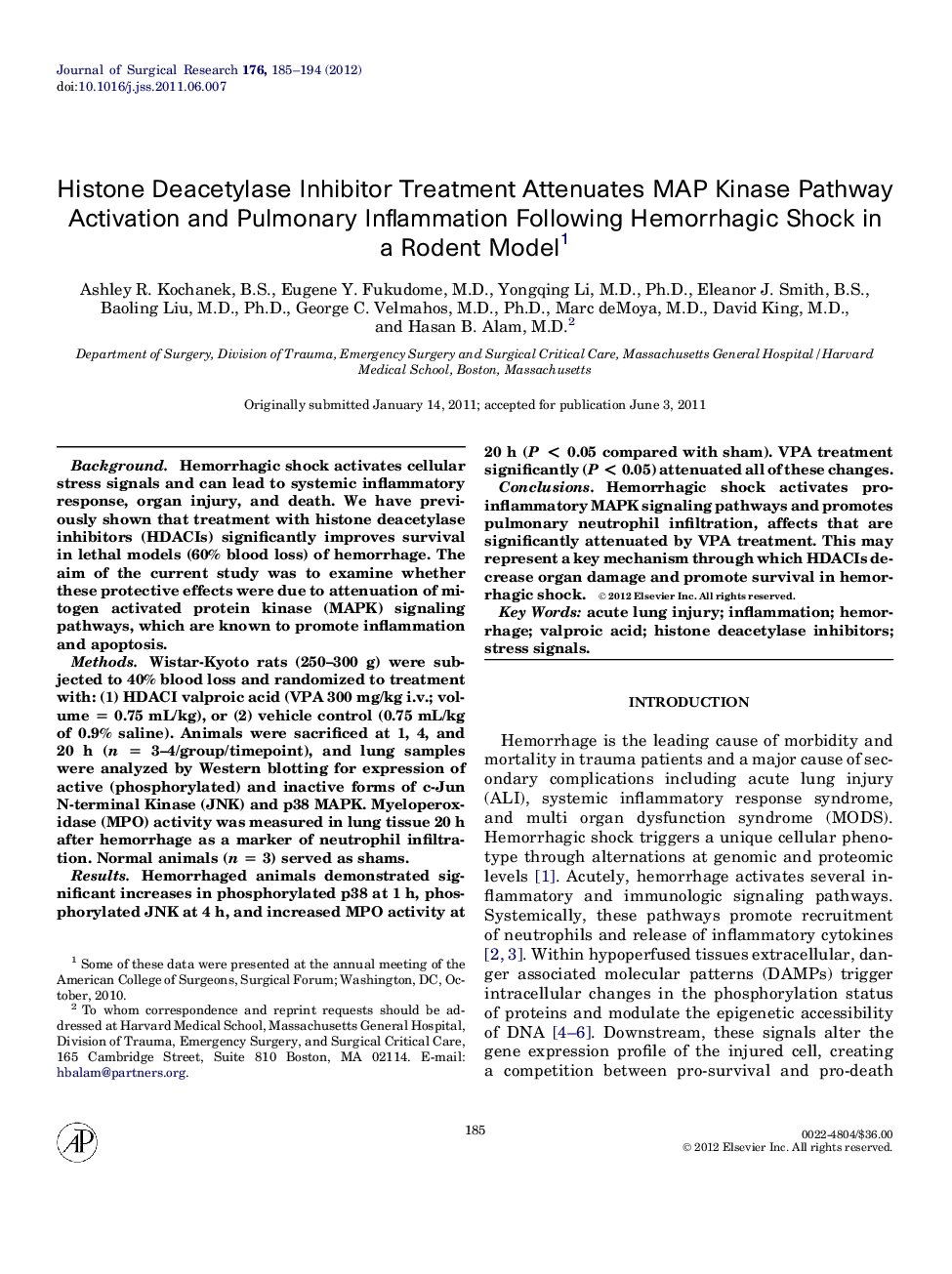| Article ID | Journal | Published Year | Pages | File Type |
|---|---|---|---|---|
| 4301280 | Journal of Surgical Research | 2012 | 10 Pages |
BackgroundHemorrhagic shock activates cellular stress signals and can lead to systemic inflammatory response, organ injury, and death. We have previously shown that treatment with histone deacetylase inhibitors (HDACIs) significantly improves survival in lethal models (60% blood loss) of hemorrhage. The aim of the current study was to examine whether these protective effects were due to attenuation of mitogen activated protein kinase (MAPK) signaling pathways, which are known to promote inflammation and apoptosis.MethodsWistar-Kyoto rats (250–300 g) were subjected to 40% blood loss and randomized to treatment with: (1) HDACI valproic acid (VPA 300 mg/kg i.v.; volume = 0.75 mL/kg), or (2) vehicle control (0.75 mL/kg of 0.9% saline). Animals were sacrificed at 1, 4, and 20 h (n = 3–4/group/timepoint), and lung samples were analyzed by Western blotting for expression of active (phosphorylated) and inactive forms of c-Jun N-terminal Kinase (JNK) and p38 MAPK. Myeloperoxidase (MPO) activity was measured in lung tissue 20 h after hemorrhage as a marker of neutrophil infiltration. Normal animals (n = 3) served as shams.ResultsHemorrhaged animals demonstrated significant increases in phosphorylated p38 at 1 h, phosphorylated JNK at 4 h, and increased MPO activity at 20 h (P < 0.05 compared with sham). VPA treatment significantly (P < 0.05) attenuated all of these changes.ConclusionsHemorrhagic shock activates pro-inflammatory MAPK signaling pathways and promotes pulmonary neutrophil infiltration, affects that are significantly attenuated by VPA treatment. This may represent a key mechanism through which HDACIs decrease organ damage and promote survival in hemorrhagic shock.
